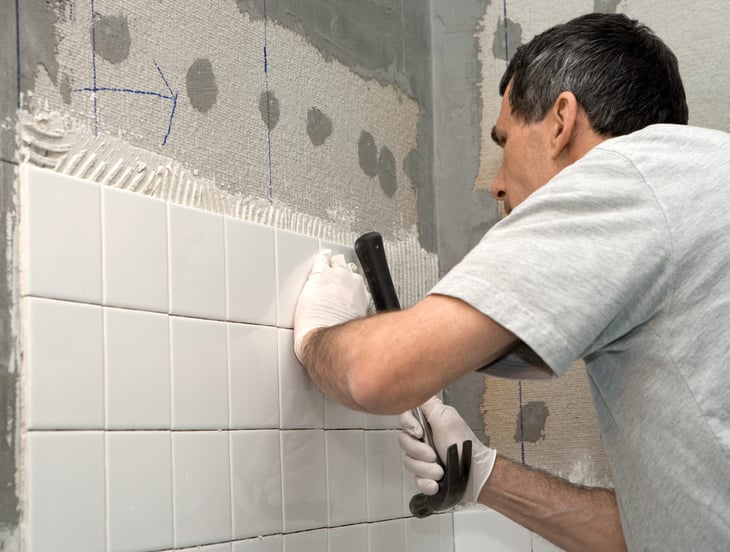
Homeownership is a trip. A few months ago, I gave up condo life and bought my first house — a 1937 Tudor Revival. And while it’s not really a fixer-upper, the demands of an 85-year-old house can be daunting.
For design inspiration, I turned to HGTV and the Magnolia Network (formerly, DIY Network), but nearly every show left me feeling annoyed and underwhelmed. As a category, home improvement shows seem less about helping real people and more about selling big-ticket products.
If you’re feeling the same way, it may be time to unplug. Here are several reasons to stop watching home improvement shows.
1. They set unrealistic expectations

We all know reality TV is anything but. Still, home improvement shows can subtly alter our expectations of the renovation process and homeownership in general. Granite kitchen islands (with waterfall edges, of course), in-law suites and media rooms — for most of us, these features would lead to floor-to-ceiling bills and wall-to-wall debt.
According to Country Living, applicants for HGTV’s “Love It or List It” must have a renovation budget of at least $100,000. While that amount of cash buys a lot of dramatic upgrades, it sets a high bar that most viewers can’t reach.
2. They’re upsetting

Hear me out: Home improvement shows are sort of addictive because they make us mad. Before the big reveal, there are dozens of design decisions that make viewers do a collective face-palm.
Who hasn’t yelled at the TV while watching homeowners gleefully paint a stone fireplace or casually rip out an antique newel post? If your blood pressure is higher at the end of a show, maybe it’s time to cancel it.
3. They skew our perception of home

When my parents bought their home in 1983, I’m fairly certain its investment potential didn’t factor into the equation. Sure, buying made solid financial sense, but creating a more secure and comfortable life drove the decision.
Home improvement shows such as “Love It or List It” and “Windy City Rehab” tend to reduce homes to their monetary potential and ignore the many non-tangible advantages they provide.
4. They encourage ‘keeping up with the Joneses’

If you’ve ever binge-watched an entire season, you already know that most home improvement shows create a weird sense of comparison and competition.
The result is an internal (and potentially expensive) dialogue that goes something like this: If everyone else is getting a cobblestone driveway, maybe I should too. Does my fridge stick out like a sore thumb since it’s not hidden behind matching cabinetry? Why am I settling for a functional, practical bathroom when everyone else has a “spa-like retreat?”
5. They oversimplify complex projects

Removing a wall is never just removing a wall. There are structural, plumbing, electrical and countless other considerations. And even when you’ve got skilled help, unexpected setbacks can derail a project for months.
Programs such as “Property Brothers” and “Good Bones” gloss over the teams of project managers, general contractors and specialized tradespeople required to pull off every stunning transformation. And some shows cut corners in real life, leading to numerous lawsuits against HGTV and program hosts.
As viewers, we see months of work (and tears and sleepless nights) condensed into a heavily edited 42 minutes of “WOW!”
See also: “Why Your Home Renovation Won’t Be Like the TV Shows”
6. They often disregard historical considerations

Home improvement shows typically group houses into two categories — architecturally significant and not. If a home doesn’t already epitomize a midcentury, Victorian or Craftsman aesthetic, the historical features it does have are completely disregarded.
The resulting “sledgehammer swinging” approach eliminates charming details that make a place unique. Built-in phone niches, original hardwood floors and antique cast-iron bathtubs all end up on the chopping block. In these episodes, only three things matter: theme, speed and the big reveal.
7. They’re not creative

Many home improvement shows are just plain boring. From formulaic scripts to yawn-worthy design choices, viewers can easily predict the conflict, resolution, and outcome.
A recent study on home improvement media by a team of professors at Bucknell University found that renovation programs have become de facto design tastemakers in the U.S. As a result, “consumers feel compelled to rely on marketplace standards rather than their own instincts in decorating their living spaces.”





Add a Comment
Our Policy: We welcome relevant and respectful comments in order to foster healthy and informative discussions. All other comments may be removed. Comments with links are automatically held for moderation.